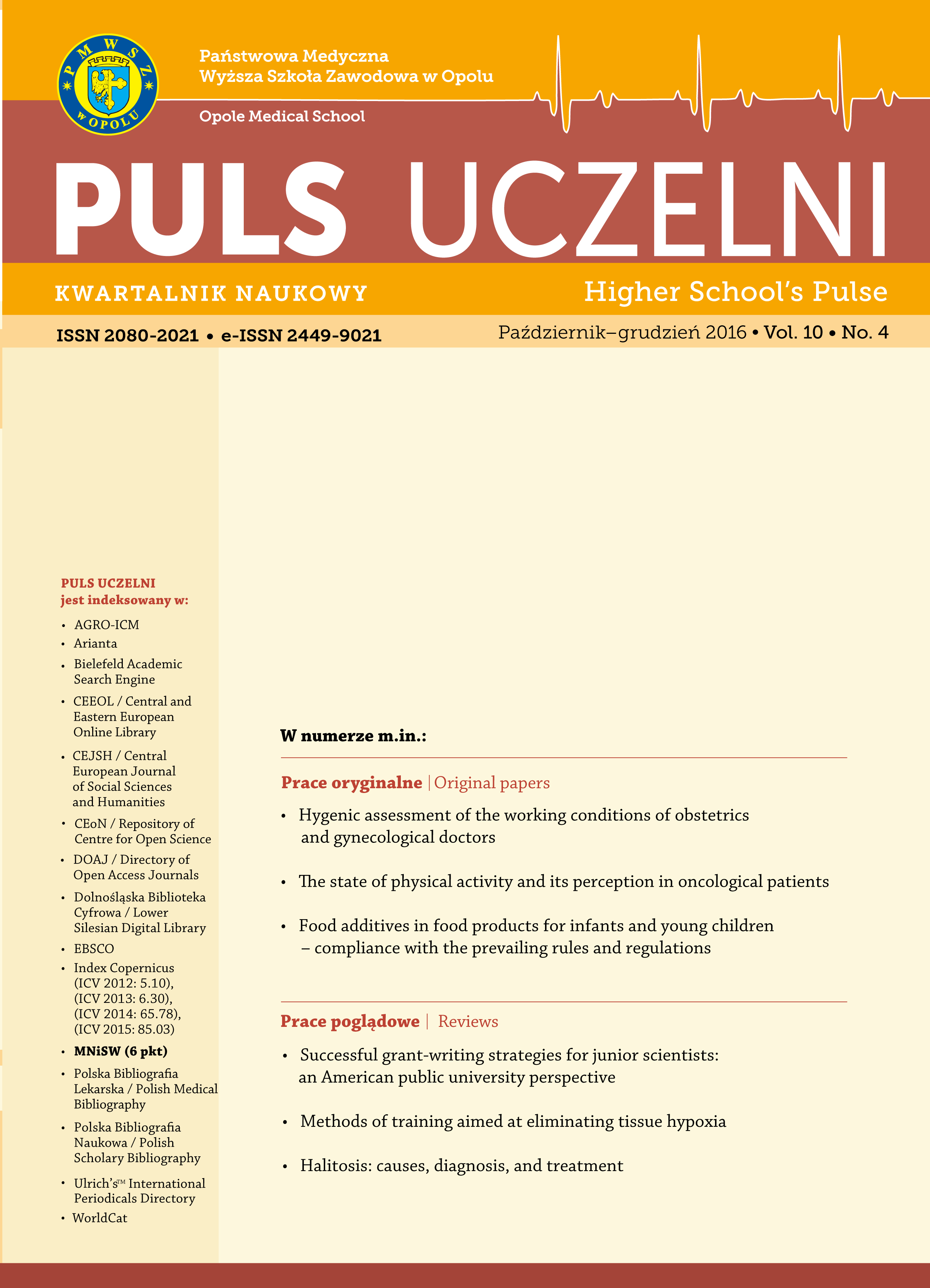Halitoza: przyczyny, diagnostyka, leczenie
Halitosis: causes, diagnosis, and treatment
Author(s): Sabina Herman, Joanna Herman, Elżbieta Mizgała, Katarzyna Ura-Sabat, Maciej MisiołekSubject(s): Social Sciences, Sociology, Health and medicine and law
Published by: Państwowa Medyczna Wyższa Szkoła Zawodowa w Opolu
Keywords: sociology;health and medicine and law;
Summary/Abstract: Nowadays halitosis is a common disorder, with a wide range of causes, mostly dental, laryngological, and gastrological. There are many ways to diagnose halitosis, but it is not always possible to determine its cause. There are also many ways of managing it, therefore patients should be encouraged to seek diagnosis and treatment for this troublesome ailment.Halitosis (halitus: smell; osis: chronic dysfunction) refers to the presence of a persistent unpleasant mouth odor, which can last for years. Halitosis can also be referred to as fetor oris, bad breath, oral malodor, ozostomia, and stomatodysodia. Apart from actual halitosis, there are also pseudohalitosis and halitophobia, when the people around the patient detect no unpleasant mouth odor, but the patient believes it is present. Fetor oris is quite a common problem, with studies confirming about 15–30% incidence among the population. Bad breath may be a symptom of other diseases, such as gastrointestinal and respiratory tract disorders or metabolic disorders. Dietary and hygienic habits are of great significance in causing halitosis. The easiest and most common diagnostic method of establishing halitosis is for the doctor to smell the patient’s exhaled air (the organoleptic method). Another easy test is the BANA test, which detects one of the proteolytic enzymes generated by the bacteria that colonise the plaque and the back of the tongue. There is also a test to objectively measure the severity of halitosis using the halimeter, a device that measures the amount of volatile sulfides in the exhaled air. Furthermore, there is gas chromatography, a very sensitive and accurate method of separately measuring the amount of each of the volatile sulfides in the exhaled air; unfortunately the test is very expensive. Halitosis management consists primarily of treating the underlying disease, and maintaining strict oral hygiene, using appropriate oral mouthwashes and chewing gums.
Journal: Medical Science Pulse
- Issue Year: 10/2016
- Issue No: 4
- Page Range: 30-35
- Page Count: 6
- Language: English

